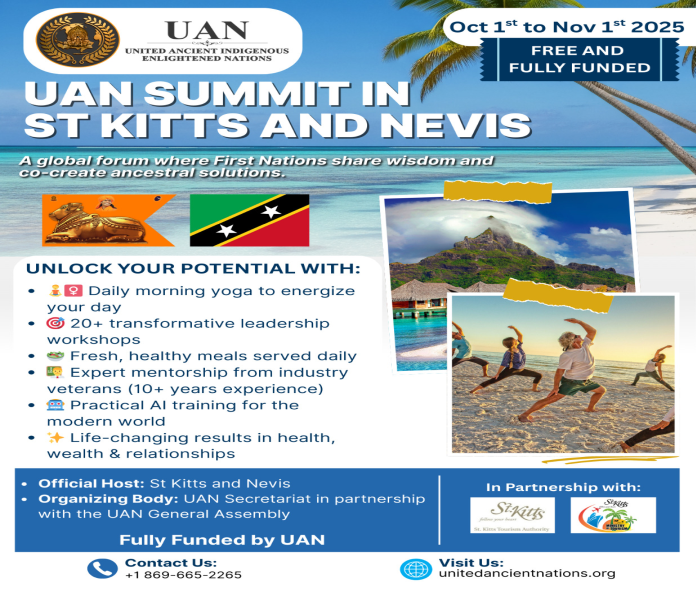By Liam Miller
The Bahamas will observe Emancipation Day on August 5, an annual holiday observed every first Monday of August. Observed by most former British colonies and territories in the Commonwealth Caribbean, Emancipation Day commemorates the anniversary of the Slavery Abolition Act of 1833. In The Bahamas, Emancipation Day festivities range from family gatherings to Junkanoo (particularly in the Fox Hill constituency) and regatta sailing. With these activities, Emancipation Day is filled with joy and relaxation for all Bahamians to relish.
Amidst the joyful Emancipation Day weekend festivities, it can be easy to forget the harmful legacy of chattel slavery that continues to linger throughout The Bahamas. Chattel slavery continues to have a significant impact on the physical, economic, and spiritual well-being of global Africans. Like all seemingly “age-old” historical events, chattel slavery exists beyond the dormant pictures and words of history books. It permeates the threads of our lives.
The goal of this two-part article series, “Unfinished Business: From Chattel Slavery to Reparatory Justice in The Bahamas,” is to chart the complex history and legacy of chattel slavery in The Bahamas and provide a case for the necessity of reparatory justice. Although the literature on these topics is extensive and the length of these articles is limited, efforts were made to strike a middle ground of comprehensiveness and conciseness.
For this article series, the term “chattel slavery” rather than the broad term of slavery to describe slavery in The Bahamas. The term “chattel slavery” places a specific emphasis on the plight of enslaved Africans rather than critics saying that every group of people practiced slavery. The term “chattel slavery” speaks to the gravity of its crimes.
Historical context
According to The Encyclopedia of World Problems and Human Potential, chattel slavery can be defined as “full slavery in its traditional form whereby slaves are the complete property of their master, can be bought and sold by him, and treated in any way that he wishes, which may include torture and other brutality, terrible working conditions, and sexual exploitation. Chattel slavery includes the buying, selling, and ownership of women and girls as concubines, wives, or prostitutes, and of the children of slaves.”
The first victims of chattel slavery in the Caribbean were not Africans but the indigenous Arawak populations. The Spanish forcibly moved the Lucayans from The Bahamas to islands such as Hispaniola (modern-day Haiti and the Dominican Republic) to search for gold and other valuable commodities. Due to diseases, inhumane working conditions, and other committed atrocities, thousands of the Arawaks died out. Poor Europeans were also brought over to work on plantations as indentured servants (they would work as enslaved people until they obtained their freedom). Still, they could not adjust to the tropical climate. Hence, to Europe, Africans were seen as a suitable replacement for previous groups, alongside serving as the perfect project to proselyte the ideologies of Christianity, white supremacy, and black inferiority.
Before even arriving in the Western Hemisphere, enslaved Africans had to survive the Middle Passage, which transported them across the Atlantic Ocean to the Western Hemisphere. Acknowledged by many, including Ambassador and Permanent Observer of the Caribbean Community (CARICOM) to the United Nations, A. Missouri Sherman-Peter, “it is now universally understood and accepted that the transatlantic trade in enchained, enslaved Africans was the greatest crime against humanity committed in what is now defined as the modern era.”
Not even comparable to the worst prisons, the Middle Passage birthed appalling conditions, including dehydration, overcrowding, foul stenches, and poor diets. Research expert Aaron O’Neil estimated that more than 12.5 million Africans were forcibly placed on slave ships en route to the Western Hemisphere. Out of this figure, it is estimated that 1.8 million (14.5%) Africans did not survive the journey. Portugal was the first European country to acquire enslaved people from Africa for plantations based in North America, South America, and the Caribbean region. Britain later became involved in the Transatlantic Slave Trade in 1562.
“Stolen from Africa brought to America”- Bob Marley.
While it is true that humans have always practiced slavery, the Transatlantic Slave Trade was different in its vast reach, fierce brutality, and seismic impact on shaping a global oppressor-oppressed dynamic. Slavery in the African kingdoms was based on relatively short-term indentured servitude rather than lifelong servitude. Additionally, while people can point out that African kingdoms freely participated in trade with European powers, it must also not be forgotten that the European powers already had a disproportionate amount of power. Hence, just like the indigenous American tribes “trading” with the Puritans in the United States, there was already an existing power dynamic that made trade coercive. This scenario speaks to the Transatlantic Slave Trade as a multidimensional project that massively changed the trajectories of Europe, Africa, The Americas, and the global community.
Slavery in The Bahamas
The first group of enslaved Africans to arrive on Bahamian shores was with the Eleutheran Adventurers in the 1640s. The population of enslaved Africans rapidly increased with the arrival of the Loyalists, who brought the cotton plantation economy and a formal “slave society” to the Bahamas. Enslaved Africans labored in the wrecking, salt, and cotton industries.
“I was generally introduced as a ‘chattel’ – a ‘thing’ – a piece of southern ‘property”- Frederick Douglass.
Upon arrival in The Bahamas, enslaved Africans were dehumanized at Vendue House (now known as the Pompey Museum), where they were sold as commodities to prospective slave-buyers. The commodification of enslaved Africans also meant that families were ripped apart from one another.
Though life for an enslaved Bahamian was marginally better than in extractive-intensive countries like Haiti and Jamaica, they still faced severe hardships. Enslaved Africans were still subject to harsh penal codes. An example of this was the 1767 Act for the “Governing of Negroes, Mulattoes, and Indians,” which criminalized violence against white persons, characterized mass gatherings as rioting, and restricted the possession of weapons and violent offenses. Very few, if any, legal protections were granted to enslaved Africans.
Hence, an enslaver or overseer could physically or sexually abuse their slaves without necessarily facing punishment. Enshrined in slave codes, enslaved Africans were coerced into learning about Christianity, with their religious and cultural backgrounds disregarded as “primitive” and “satanic.” Though some surviving remnants of this culture – Asue, Junkanoo, folktales, and herbal practices – remain, many other aspects, most notably last names and tribal lineage, were lost.
Emancipation and apprenticeship
Due to abolitionist activism coupled with an economic transition from agriculture to industrialization, the British Empire ended the chattel slave trade in 1807 and later the ownership of enslaved people in 1834 via the Slavery Abolition Act on August 1st, 1834. However, apprenticeship soon followed, where enslaved people under six were freed. In contrast, older enslaved people were subject to a period of apprenticeship with their former enslavers. These enslaved Africans, now “apprentices,” were still subject to various punishments such as beatings and hard labor if they did not “show up” for work.
Though apprenticeship aimed to transition enslaved Africans into public life, it failed to properly equip them with the skills needed to live as free citizens and further develop the Bahamian economy. It was also unable to create an equitable racial order throughout The Bahamas and the wider Commonwealth Caribbean.
The British government borrowed 20 million pounds (equivalent to 40 percent of the UK Treasury) to compensate enslavers. The UK Treasury did not pay off the debt until 2015 (nearly ten years ago). Hence, while the oppressor was compensated for monetary loss, the oppressed were never compensated for their physical, mental, or emotional losses.
Legacy and modern implications
After abolition and apprenticeship, the racial caste system continued in The Bahamas, with the white oligarchy remaining on top. Successive movements championing gender, economic, and racial equality propelled The Bahamas to attain majority rule in 1967 and obtain independence in 1973, achieving political autonomy in the journey of emancipation. Despite these successes, the legacy of chattel slavery continues to shape the Bahamian identity. Various issues such as colourism, economic exploitation, generational inequality, and remnants of age-old colonial practices in our legal codes continue to impact us, directly or indirectly. Emancipation Day should commemorate what our ancestors overcame and remind us that their fight, OUR fight, is still not over.
In the next part of this series, we will delve into the history of the reparations movement and the necessity for reparatory justice for the oppressed and oppressors.
– Liam J. Miller is an economist and reparations advocate passionate about sustainable development for small island developing states (SIDS) and the wider Global South. He works at the Central Bank of The Bahamas as an Apprentice Professional. He is also the founder and Executive Director of Basic Income Bahamas, a non-profit dedicated to advocating for a universal basic income in The Bahamas, and Chief Executive Officer of The Island Economist, an online platform dedicated to providing regular insights on the Bahamian economy.





